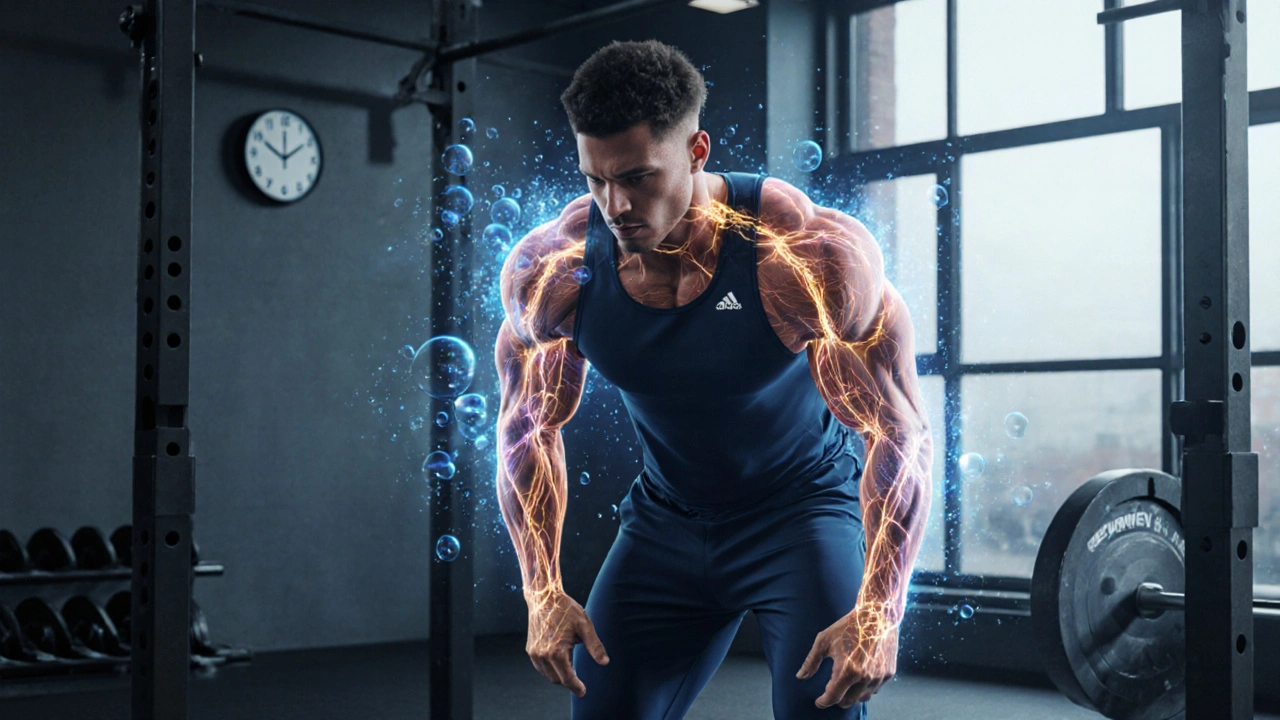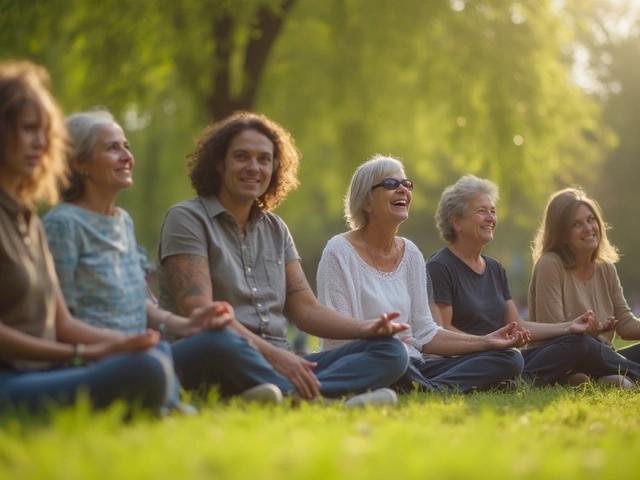
Sports Massage Timing Calculator
Did you know elite athletes shave up to 20% off recovery time simply by incorporating sports massage into their training plan? That’s not a myth - it’s a science‑backed advantage used by Olympians and pro teams worldwide. If you’re a trainer, therapist, or athlete looking to level up, this guide walks you through everything a pro needs to know.
What Exactly Is Sports Massage?
Sports massage is a targeted massage therapy designed to prepare athletes for competition, assist in recovery, and prevent injuries. It blends elements of deep‑tissue work with dynamic stretching, focusing on muscles, tendons, ligaments, and fascia that are most stressed during sport.
Core Techniques Every Pro Should Master
While the overall goal is the same - improve performance and reduce downtime - the toolbox varies. Below are the four most common techniques, each with a distinct purpose.
| Technique | Typical Pressure | Primary Goal | Ideal Session Length | Best For |
|---|---|---|---|---|
| Swedish Massage | Light‑to‑moderate | Warm‑up, circulation boost | 15‑30min | Pre‑event relaxation |
| Deep Tissue Massage | Firm to intense | Release chronic tension | 30‑45min | Post‑event soreness |
| Myofascial Release | Gentle sustained pressure | Restore fascia elasticity | 20‑40min | Restricted range of motion |
| Trigger Point Therapy | Focused, moderate‑to‑high | Neutralize painful knots | 10‑25min per area | Localized pain hotspots |
Knowing when to apply each technique is as critical as mastering the strokes themselves.
When and How to Integrate Sports Massage Into Training
- Pre‑Event (24‑48hours before): Light‑to‑moderate Swedish or dynamic stretching massage to increase blood flow and prime neuromuscular pathways.
- During Competition (in‑event): Quick myofascial release or trigger point bursts (2‑5minutes) to keep muscles pliable.
- Post‑Event (within 2hours): Deep tissue or trigger point work to flush metabolic waste and reduce delayed onset muscle soreness (DOMS).
- Recovery Days (24‑72hours after): Combination of myofascial release and gentle deep tissue, followed by active stretching.
Timing isn’t a one‑size‑fits‑all; adjust based on sport intensity, individual tolerance, and competition schedule.
Why Athletes Swear By Sports Massage
Research from the Australian Institute of Sport (2023) shows a 15‑20% reduction in perceived fatigue when athletes receive regular massage. Below are the top three measurable benefits.
- Accelerated Muscle Recovery: Massage boosts circulation, delivering oxygen and nutrients faster while clearing lactate and inflammatory mediators.
- Performance Enhancement: Improved range of motion and reduced muscle stiffness translate into higher sprint speeds and longer jump distances.
- Injury Prevention: Regular tension checks catch early‑stage strain, allowing pre‑emptive soft‑tissue work before a tear occurs.
Professional Practice Tips for Massage Therapists
Even seasoned therapists can slip into bad habits. Here’s a checklist to keep your practice at pro level.
- Pre‑Session Assessment: Conduct a quick biomechanics scan - note dominant side, recent injuries, and training load.
- Hygiene & Safety: Use hypoallergenic oils, sanitize hands between clients, and keep the treatment table at a comfortable 34‑36°C.
- Communication: Ask the athlete for pressure feedback every 2‑3minutes. Adjust on the fly - a “good” rating should stay above 7/10 on a simple scale.
- Documentation: Log the techniques used, areas treated, and any observed abnormalities. This record helps coaches track progress.
- Continuing Education: Attend at least one sports‑focused workshop annually - new research on fascia‑grounded techniques emerges fast.
Building a Balanced Sports Massage Routine
Just like a training split, a massage program needs periodisation.
- Foundation Phase (Weeks1‑4): Light Swedish + weekly myofascial release to establish baseline flexibility.
- Strength Phase (Weeks5‑8): Introduce deep tissue and trigger point work twice a week, focusing on high‑stress muscle groups.
- Peak Phase (Weeks9‑12): Taper intensity, use short, targeted sessions before competition, and increase recovery sessions after events.
Adjust the cycle based on the athlete’s competition calendar and any emerging soreness patterns.
Choosing the Right Sports Massage Therapist
A solid credential set can be a make‑or‑break factor. Look for these markers.
- Certification: Australian Association of Massage Therapists (AAMT) or equivalent, plus a sports‑massage specialization.
- Experience with Your Sport: Ask for case studies or references from similar athletes.
- Continual Learning: Membership in sports‑medicine networks or attendance at conferences like the International Conference on Sports Medicine.
- Client‑Centred Approach: Therapists should collaborate with coaches, physiotherapists, and the athlete to align goals.
Common Misconceptions About Sports Massage
Even pros get tripped up by myths. Let’s set the record straight.
- Myth: It’s only for injury recovery.
Fact: Preventative massage reduces injury risk by up to 30% when done regularly. - Myth: The harder the pressure, the better the results.
Fact: Excessive force can cause micro‑tears; optimal pressure is individualized. - Myth: One session fixes everything.
Fact: Consistency over weeks delivers measurable performance gains.
Quick Reference Checklist
- Assess athlete’s training load before each session.
- Match technique to goal: warm‑up, recovery, or injury prevention.
- Maintain pressure feedback loop.
- Document technique, duration, and athlete response.
- Review and adjust plan every 4‑6weeks.
Frequently Asked Questions
How often should an athlete receive sports massage?
For most competitive athletes, a 30‑minute session 2‑3 times per week during heavy training blocks works well. During taper phases, reduce to once a week or focus on short pre‑event massages.
Is sports massage safe for beginners?
Yes. Starting with lighter Swedish techniques helps the body adapt. Therapists should always gauge pressure tolerance and avoid deep tissue until the client builds resilience.
Can sports massage replace physiotherapy?
No. Massage complements physiotherapy by managing soft‑tissue health, but it doesn’t address joint alignment, ultrasound therapy, or specific rehab protocols that physiotherapists provide.
What oils are best for sports massage?
Light, non‑greasy options like grapeseed or fractionated coconut oil are preferred because they glide well, absorb quickly, and rarely cause skin irritation.
How long does a typical sports massage session last?
Sessions range from 15minutes (pre‑event quick release) to 60minutes (full‑body recovery). Most athletes find 30‑45minutes optimal for post‑training work.





